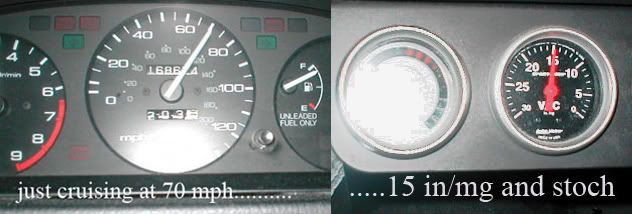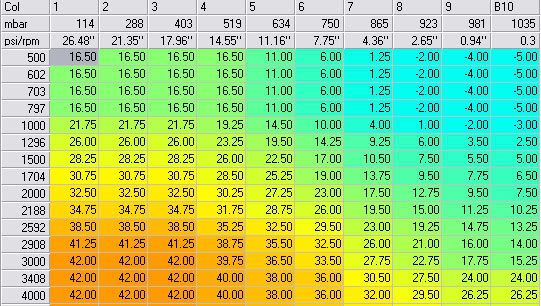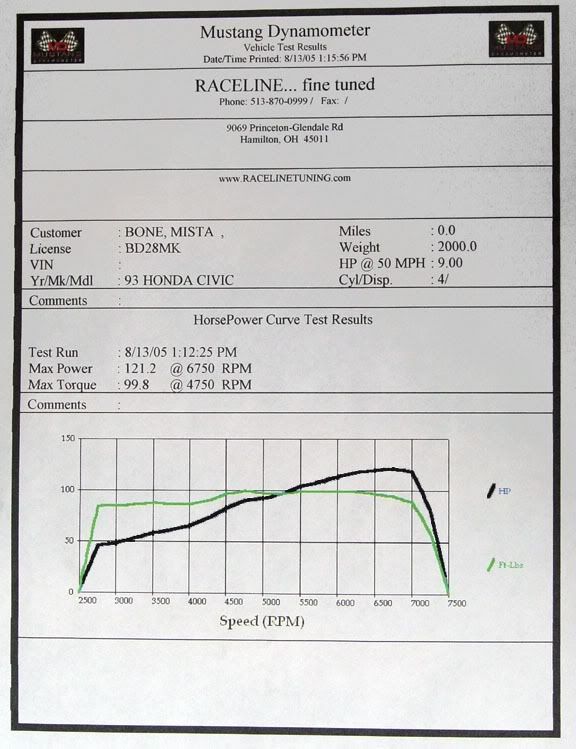 03-11-2014, 07:53 AM
03-11-2014, 07:53 AM
|
#21 (permalink)
|
|
Master EcoModder
Join Date: Sep 2009
Posts: 5,927
Thanks: 877
Thanked 2,024 Times in 1,304 Posts
|
I never laughed at smokey, in fact his articles were the first I read when I got the mag.
If your positions are correct then why would Honda even bother to build a VX, or for that matter any economy oriented version of any of their cars, since, according to you, they are a waste of money.
Oh yes the epa ratings are all a joke (just in the context of comparison).
regards
Mech
|
|
|

|
 Today Today
|
|
|
|
 Other popular topics in this forum...
Other popular topics in this forum...
|
|
|
|
 03-12-2014, 01:54 AM
03-12-2014, 01:54 AM
|
#22 (permalink)
|
|
EcoModding Lurker
Join Date: Mar 2014
Location: Cincity, Ohio
Posts: 96
Thanks: 29
Thanked 27 Times in 21 Posts
|
Quote:
Originally Posted by sarguy01

Why would the downshifts kill the gains? To the average driver, maybe, but to an ecomodder who knows how to handle hills? I am not sure I agree with this. For example, if the ecomodder is driving with load and already knows how to drive up hills to save fuel, I think in the end the VX/CX geared transmissions would still come out ahead in mileage because of the lower rpm benefit.
Do you have some of this real world mileage testing for us to look at? It'd be great to see.
|
Quote:
Originally Posted by Old Mechanic

I never laughed at smokey, in fact his articles were the first I read when I got the mag.
If your positions are correct then why would Honda even bother to build a VX, or for that matter any economy oriented version of any of their cars, since, according to you, they are a waste of money.
Oh yes the epa ratings are all a joke (just in the context of comparison).
regards
Mech
|
VX in lean burn VTEC-E like the CX and HF are all 8 valve motors. With the smaller intake ports and runners as well are needed to keep air veolcity up because the engine is designed to operate in a lower powerband.
With a true 16 Honda, the "sweet spot" where the engine is happiest (PT BSFC) is at a higher rpm. I found it to be 2800-3200 rpm. Below 2800 rpm the engine more throttle input was needed to get up the hills. With Honda ECU's (OBD-1 and older) when you go below 10" of vacuum then engine mapping is more performance oriented. On flat ground I would be cruising at 15-16".....

Old Mech, are you old enough (I'm 47) to remember when you could play with the ignition timing? Add 2-4 degrees base timing as well and lighten the springs so the weights added timing at lower rpm, then tweak the vacuum advance canister????
Well I did all that with the help of a friends who tunes ECU's.
Here is a stock timing map....

Here is one with more timing, esp under light throttle, 11-14" vacuum

Also add that stock base timing was 16 BTDC and I was at 22 BTDC + the extra timing via the ECU.
The nice thing, that ECU tune was smog friendly enough to pass VX ULEV standards. I'll have to dig up that EPA printout.
Mind you this was all in 2000-2005 timeframe. 53 mpg on pure gas including two dyno pulls.

|
|
|

|
 03-12-2014, 07:46 AM
03-12-2014, 07:46 AM
|
#23 (permalink)
|
|
Master EcoModder
Join Date: Jan 2010
Location: Virginia Beach
Posts: 468
Thanks: 86
Thanked 87 Times in 54 Posts
|
Quote:
Originally Posted by Mista Bone

VX in lean burn VTEC-E like the CX and HF are all 8 valve motors. With the smaller intake ports and runners as well are needed to keep air veolcity up because the engine is designed to operate in a lower powerband.
With a true 16 Honda, the "sweet spot" where the engine is happiest (PT BSFC) is at a higher rpm. I found it to be 2800-3200 rpm. Below 2800 rpm the engine more throttle input was needed to get up the hills. With Honda ECU's (OBD-1 and older) when you go below 10" of vacuum then engine mapping is more performance oriented. On flat ground I would be cruising at 15-16".....
Old Mech, are you old enough (I'm 47) to remember when you could play with the ignition timing? Add 2-4 degrees base timing as well and lighten the springs so the weights added timing at lower rpm, then tweak the vacuum advance canister????
Well I did all that with the help of a friends who tunes ECU's.
Here is a stock timing map....
Here is one with more timing, esp under light throttle, 11-14" vacuum
Also add that stock base timing was 16 BTDC and I was at 22 BTDC + the extra timing via the ECU.
The nice thing, that ECU tune was smog friendly enough to pass VX ULEV standards. I'll have to dig up that EPA printout.
Mind you this was all in 2000-2005 timeframe. 53 mpg on pure gas including two dyno pulls.
|
You quoted us but didn't answer our questions.
I understand that you believe the motor has sweet spots and more gas will be used to get up a hill with a taller final drive, when compared with the same exact car and a lower final drive. But, how would a higher final drive return less mileage overall than the same exact car with a lower final drive? After all, we aren’t driving uphill everywhere we go. There are downhills that will help average out the uphills. We can clearly see by EPA ratings that a VX does better than a regular Civic. Even the personally added mpg’s are high with the VX.

I was not sure of your intent, but you are on an auto enthusiast forum. I think you'll find on here age isn't necessarily a factor in automotive knowledge. I am younger than you and have a timing light hanging on my wall in the garage. I know how a distributor works, to include mechanical and vacuum advance. Why did you only address Old Mechanic in a post with both of us quoted?
|
|
|

|
 03-12-2014, 08:09 AM
03-12-2014, 08:09 AM
|
#24 (permalink)
|
|
Master EcoModder
Join Date: Sep 2009
Posts: 5,927
Thanks: 877
Thanked 2,024 Times in 1,304 Posts
|
Mista Bone I'm 63. JFK was killed on my 13th birthday, 11/22/63. Old Man Honda died in 1991. The VX was the crowning achievement of his life's work, in my opinion. A practical 4 passenger car that could pull 60+ MPG with some driving techniques at very close to Interstate highway speeds. When in lean burn mode both intake valves were open but one was just barely open. This created turbulence which enhanced homogenization of the fuel air mixture and allowed AF ratios to approach 25to1.
Was it powerful or high perfromance, nope. Have some of the modders made serious perfromance improvements while maintaining high efficiency?
I think pgfpro is the same person I read his work with performance mods on a 3 stage V-TEC engine on another forum. His dedication to performance AND ECONOMY was admirable although maybe not well appreciated by many. My field of specialty was the first generation Nissan-Datsun Z-cars. I had one that would run with a Z 28 and still pull 28 MPG and I replaced the 3.54 diff with a 3.90 for better performance. The 3.54 with a.754 overdrive 82 ZX 5 speed gave me almost the identical overall final drive ratio of the VX. My 76 ZX had dash adjustable mixture using the water tempsensor circuit. Z cars were fuel injected in 1975. I remember begging my POP (still alive at almost 93) to help me buy a 47 Lincoln Continental Convertible in 1967. I remember a mid 30s Cadillac V16 Limo with the open drivers compartment for $3500 and a 70 Barracuda hemi convertible for $2500. I knew every year, make and model of virtually every car on American highways from 1936 to 1966 when I was 15.
regards
Mech
Last edited by user removed; 03-12-2014 at 08:28 AM..
|
|
|

|
 03-12-2014, 08:44 AM
03-12-2014, 08:44 AM
|
#25 (permalink)
|
|
Cyborg ECU
Join Date: Mar 2011
Location: Coastal Southern California
Posts: 6,302
Thanks: 2,374
Thanked 2,176 Times in 1,471 Posts
|
Those are interesting, but I don't think a timing map and a BSFC map are the same. Vacuum would be a good way to measure engine load. But I don't see information about fuel consumption at these loads. I see power production but not fuel consumption for that power. Most of the BSFC maps I have seen show sweet spots at lower RPMs. A car that might produce the most power at 5000 RPMs might produce its most efficient power at 2000 RPMs. I have looked many times for a stock BSFC map for my Civic online. Never found one. But you can find examples on this site, if you search for BSFC maps. (BTW, stock timing on my 98 DX is 12 BTDC, not 16... 22 BTDC must have meant very lean conditions, no?)
__________________
See my car's mod & maintenance thread and my electric bicycle's thread for ongoing projects. I will rebuild Black and Green over decades as parts die, until it becomes a different car of roughly the same shape and color. My minimum fuel economy goal is 55 mpg while averaging posted speed limits. I generally top 60 mpg. See also my Honda manual transmission specs thread.


|
|
|

|
 03-12-2014, 08:56 AM
03-12-2014, 08:56 AM
|
#26 (permalink)
|
|
Master EcoModder
Join Date: Jan 2010
Location: Virginia Beach
Posts: 468
Thanks: 86
Thanked 87 Times in 54 Posts
|
Mista Bone, were these transmission swaps done along with engine tuning/modification? If so, that really makes it hard (impossible) to justify the gains the transmission swap gave you.
|
|
|

|
 03-12-2014, 01:22 PM
03-12-2014, 01:22 PM
|
#27 (permalink)
|
|
Master EcoModder
Join Date: Jul 2008
Location: Silly-Con Valley
Posts: 1,479
Thanks: 201
Thanked 262 Times in 199 Posts
|
Another point is that you can gain BSFC and still lose overall MPG. Even if the engine uses less fuel per injection, and therefore less per revolution, your need more revolutions of the engine to go one mile with a lower gear than a taller one. So unless the gains from running the engine in its sweet spot are more than the difference between the gear ratios, you get better economy from running in the higher gear.
-soD
|
|
|

|
 03-13-2014, 03:31 AM
03-13-2014, 03:31 AM
|
#28 (permalink)
|
|
EcoModding Lurker
Join Date: Mar 2014
Location: Cincity, Ohio
Posts: 96
Thanks: 29
Thanked 27 Times in 21 Posts
|
Old Mech: pgfpro = rrussel on another forum we are on. I'm transzex on that forum...
I did some FE testing 64.8mpg - D-series.org
Performance AND Economy, aka have your. cake and eat it too. |
|
|

|
 03-13-2014, 03:41 AM
03-13-2014, 03:41 AM
|
#29 (permalink)
|
|
EcoModding Lurker
Join Date: Mar 2014
Location: Cincity, Ohio
Posts: 96
Thanks: 29
Thanked 27 Times in 21 Posts
|
Quote:
Originally Posted by sarguy01

Mista Bone, were these transmission swaps done along with engine tuning/modification? If so, that really makes it hard (impossible) to justify the gains the transmission swap gave you.
|
Straight transmission swap, no tuning involved. I was just learning how to rebuild these trannys and made a few mistakes as well as trying different ratios. One year (2000 or 2001) I was swapping transmissions about every three weeks. The tune that Blundar (David Blundell - Tuner) used was a best guess first shot, there was more there but 10-12 much was unknown about the limits of the tuning.
Quote:
Originally Posted by some_other_dave

Another point is that you can gain BSFC and still lose overall MPG. Even if the engine uses less fuel per injection, and therefore less per revolution, your need more revolutions of the engine to go one mile with a lower gear than a taller one. So unless the gains from running the engine in its sweet spot are more than the difference between the gear ratios, you get better economy from running in the higher gear.
-soD
|
soD: either low rpm like most prefer on here or a higher more normal rpm like I prefer both require the same amount of fuel when cruising at same speed in same car on the highway. The advantage of the higher rpm is if you have to pass someone, like a 18 wheelers doing 55 mph and cars are allowed 65 mph. To make that pass I had to use less throttle input. With longer gears you will have to use more fuel to safely overtake, same thing if on a hill or a stiff headwind. |
|
|

|
 03-13-2014, 03:53 AM
03-13-2014, 03:53 AM
|
#30 (permalink)
|
|
EcoModding Lurker
Join Date: Mar 2014
Location: Cincity, Ohio
Posts: 96
Thanks: 29
Thanked 27 Times in 21 Posts
|
Quote:
Originally Posted by California98Civic

Those are interesting, but I don't think a timing map and a BSFC map are the same. Vacuum would be a good way to measure engine load. But I don't see information about fuel consumption at these loads. I see power production but not fuel consumption for that power. Most of the BSFC maps I have seen show sweet spots at lower RPMs. A car that might produce the most power at 5000 RPMs might produce its most efficient power at 2000 RPMs. I have looked many times for a stock BSFC map for my Civic online. Never found one. But you can find examples on this site, if you search for BSFC maps. (BTW, stock timing on my 98 DX is 12 BTDC, not 16... 22 BTDC must have meant very lean conditions, no?)
|
With less load due to the higher rpms, the chipped ECU allowed more total timing which allowed more time for the lean mixture to burn as completely as possible. When I would encounter a hill or overtake another vehicle I would stay in the higher timing range unlike with a longer geared transmission you'd end up with way less timing, as you can see on the timing maps I posted.
The big thing is, I'm allowed to easily play with the engine tuning parameters, 96 and up it is not so easy. Now if you could, you could see some gains.
|
|
|

|
|
The Following User Says Thank You to Mista Bone For This Useful Post:
|
|
|